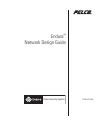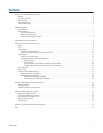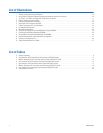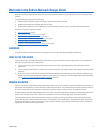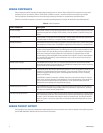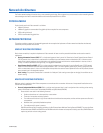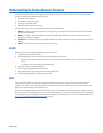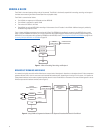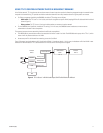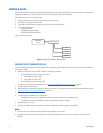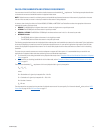
C1640M-B (3/06) 7
Network Architecture
The Endura network topology is based on using current networking technology. Pelco suggests that you recommend or select networking devices
and technologies that meet or exceed the features and functionality described in this section.
PHYSICAL MEDIA
Physical media used in the Endura network is as follows:
• 100baseT minimum.
• 1000baseT (gigabit) is recommended. One gigabit uplinks are required for some components.
• CAT5e cabling (minimum).
• CAT6 is recommended for gigabit links.
NETWORK PROTOCOLS
This section provides a summary of the networking protocols that are required to implement an Endura network and describes the features/
functionality that the protocols must exhibit.
UNICAST ROUTING PROTOCOLS
Basic unicast connectivity is required to implement an Endura network. At least one of the protocols listed below can be used to meet this
requirement:
• Routing Information Protocol (RIP): RIP is a simple routing protocol that is part of the Transmission Control Protocol/Internet Protocol
(TCP/IP) protocol suite. It determines a route based on the smallest hop count between source and destination. RIP is a distance vector
protocol that routinely broadcasts routing information to its neighboring routers and is known to waste bandwidth. It also has a limit of
15 hops. If a route is advertised as having 16 hops, it is flagged as unreachable.
• Open Shortest Path First (OSPF): OSPF is a routing protocol that determines the best path for routing IP traffic over a TCP/IP network
based on distance between nodes and several quality parameters. OSPF is an interior gateway protocol (IGP), which is designed to work
within an autonomous system. It is also a link state protocol that provides less router-to-router update traffic than the RIP protocol (distance
vector protocol) that it was designed to replace.
• Static routing: This protocol forwards data in a network via a fixed path. Static routing cannot adjust to changing line conditions as can
dynamic routing.
MULTICAST ROUTING PROTOCOLS
Multicast routing is required to allow Endura components to communicate with one another. At least one of the protocols listed below can be
used to meet this requirement:
• Protocol Independent Multicast (PIM): PIM is a multicast routing protocol that is used in conjunction with an existing unicast routing
protocol. PIM comes in two versions: Dense Mode (PIM-DM) and Sparse Mode (PIM-SM).
– Dense mode is most useful in the following instances:
• Senders and receivers are in close proximity to one another.
• There are a few senders and many receivers.
• The multicast traffic volume is high. Dense mode forwards multicast data everywhere, and lets switches prune out traffic that is
not requested.
• Multicast data is periodically flooded everywhere.
• The multicast traffic stream is constant.
PIM-DM uses Reverse Path Forwarding and looks a lot like Distance Vector Multicast Routing Protocol (DVMRP). The most significant
difference between DVMRP and PIM-DM is that PIM-DM works with whatever unicast protocol is being used. Also, PIM-DM does not
require any particular unicast routing protocol.



